- Home
-
About us
-
Product
-
Project
- Scientific exchange
- News
- Videos
-
Member Centre
- Contact
1、 Basic situation of earthworm breeding:
In the process of earthworm breeding, the fermentation treatment of earthworm feed (poultry excrement, lees, bagasse, leftover food, waste blood and animal viscera, etc.) is the key. If the feed is not fermented or not completely fermented, harmful gases will be produced, and the ph is too high or too low, which may make earthworm escape, not to produce cocoons or even die.
Using EM raw liquid to ferment the manure, the fermentation time of the manure is greatly shortened, the peculiar smell is reduced, and after the feed is fermented well, the pH value will naturally reach 6.5 ~ 7.5, need not adjust, can be fed directly, the feed utilization rate is greatly improved, the earthworm cocoon production, reproduction is fast, the yield is increased 2 ~ 3 times.
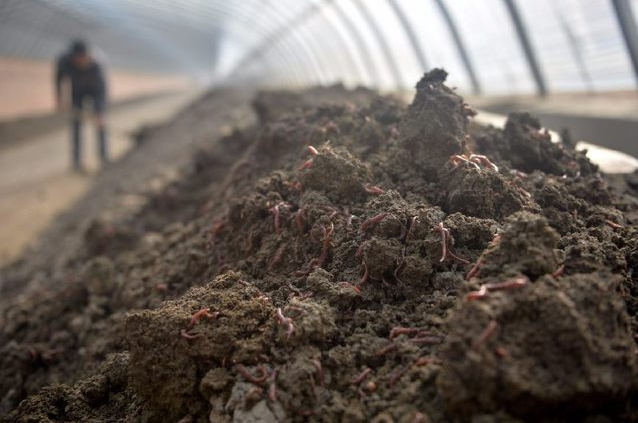
1.1 Living Habits of earthworms:
Several different uses of earthworm farming
Main species of earthworm suitable for cultivation as Chinese medicinal materials is Trichoderma trichoderma.
Earthworm varieties for For aquatic bait on behalf of the variety of Hubei ring wool worm.It is suitable to live in the soil with high humidity in pools, ponds and rivers. It can survive in water for a long time and does not pollute the water.
Earthworm for forestry earthworm mainly includes Wilhelm ring worm, likes to live in forest, grass, flower beds underground, produce manure fields.
The production of earthworm meat, earthworm dung for the love of the genus, the more common is the child love worms, suitable for China's breeding in many areas, like to eat garbage and livestock and poultry dung.this purpose are mainly white stem ring worm, which can loose soil and produce dung, and the effect of fertilizing fields is better.
For aquatic bait on behalf of the variety of Hubei ring wool worm.It is suitable to live in the soil with high humidity in pools, ponds and rivers. It can survive in water for a long time and does not pollute the water.
Earthworm for forestry earthworm mainly includes Wilhelm ring worm, likes to live in forest, grass, flower beds underground, produce manure fields.
The production of earthworm meat, earthworm dung for the love of the genus, the more common is the child love worms, suitable for China's breeding in many areas, like to eat garbage and livestock and poultry dung.
1.2 Environment for the growth of earthworms:
1, temperature: 15℃-25℃ is the best temperature;
2, like wet, afraid of dry: the water content of earthworm is about 80%;
3, like dark, afraid of light: earthworms nocturnal;
4, like air, like static, loose bait is beneficial to the growth of earthworms.
1.3 Sources of earthworm food varieties:
Animal feed: namely cow manure, horse manure, pig manure, chicken manure and other kinds of livestock and poultry feces.
Plant feed: corn, wheat, rice and other crop straw, all kinds of weeds, leaves and so on.
Garbage feed: rotten vegetable leaves, rotten fruits, watermelon rind, rotten tomatoes, waste paper and some industrial wastes in urban household garbage.
2、Value of earthworms
Earthworms have a very close relationship with human beings, which was first recorded in the Book of Songs 2,500 years ago.In the book of Rites of Xiao Dai, there is also a description of the Moon: "Earthworms emerge in Early summer and knot in mid-winter".In "Ode to Earthworms" written by Eastern Qiu in the Tang Dynasty, there is a more vivid description of the form and habits of earthworms: "When the rain is about to fall, I see it; when the heat comes, I cry first; when it winds, I see the winding eel, or I run like a snake.Lack of muscles and bones, no hands and feet outside, willful and up, hit things will be curved ".
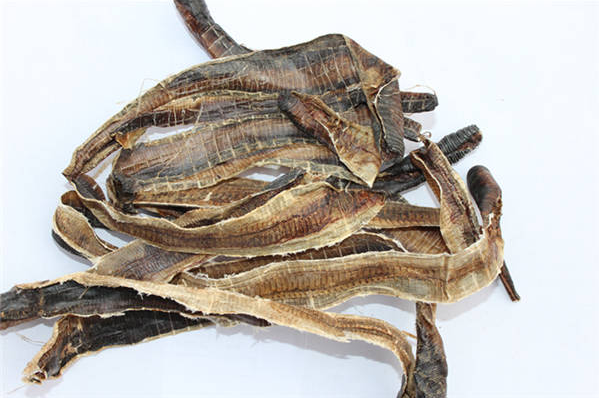
Comprehensive description of earthworms is compendium of Materia Medica written by Li Shizhen in Ming Dynasty, followed by The Canon of Materia Medica and Compendium of Materia Medica.
2.1Traditionalmedicine,stillusedtoday:
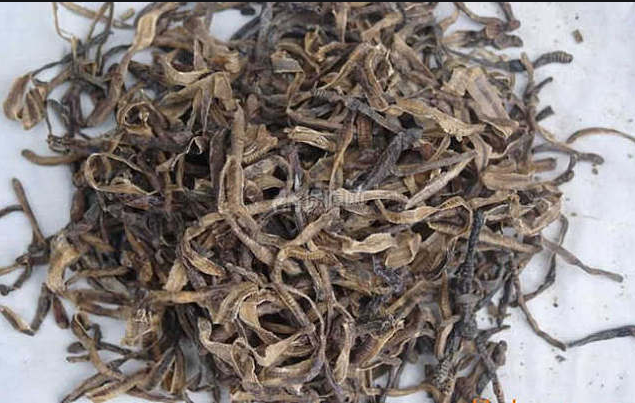
Comprehensive description of earthworms is compendium of Materia Medica written by Li Shizhen in Ming Dynasty, followed by The Canon of Materia Medica and Compendium of Materia Medica.
2.2Traditionalmedicine,stillusedtoday:
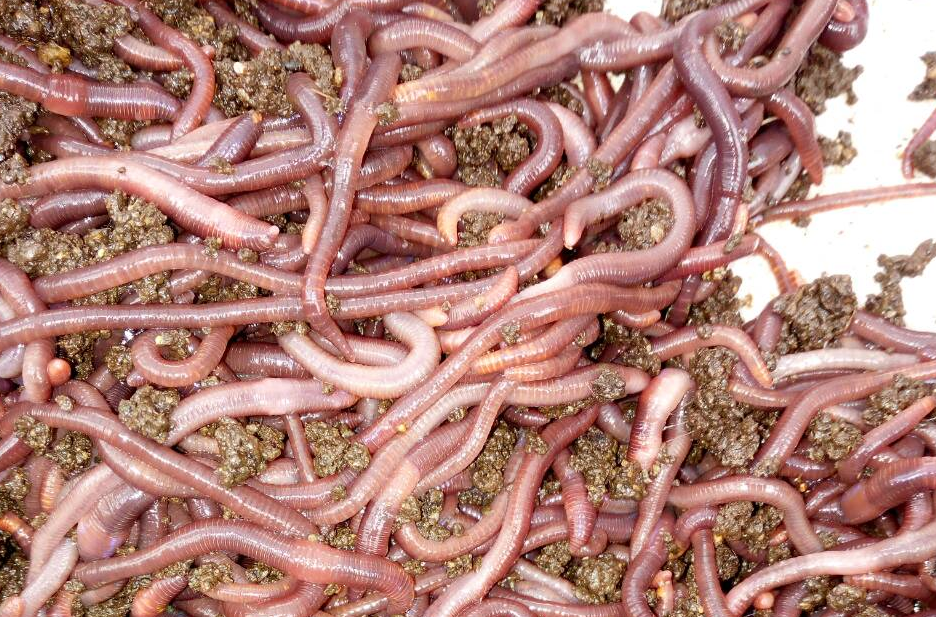
3. Overview of the development of earthworm culture at home and abroad
In China, earthworm farming has entered a healthy and stable development track after experiencing twists and turns.Earthworm as raw material health wine, beverage, growth agent, organic fertilizer, pharmaceutical, food and so on are rising rapidly.Our country produces pure dilong powder, "longtai calcium capsule" high activity lumbrokinase, superoxide dismutase (SOD) thrombolytic capsule.Thousands of tons a year are used in pharmaceuticals alone.
Beijing huanyu technology and trade company, relying on Beijing big ring earthworm factory, is the production of vermicompost to do lawn fertilizer, flower fertilizer development, has formed an annual output of 5000 tons of earthworm, vermicompost 10000 tons of industrial system, is the only through China's development of earthworm trough the largest professional earthworm breeding leading enterprises.Already developed flower special fertilizer, lawn special fertilizer, fruit tree special fertilizer, green vegetable fertilizer, the breeding industry of our country earthworm already mature trend market.
4、Market prospect of earthworm culture
Earthworm breeding not only opens up a new source of animal protein feed for the development of livestock, poultry and aquaculture, but also finds a new way to purify the environment and deal with public hazards in cities.With the application of earthworm depth research, it can also provide valuable raw materials for food, medicine and other industries.In domestic medicine, earthworms reach hundreds of millions of tons every year, which provides good conditions for artificial earthworms breeding.At present, the international market has 150,000 yuan per ton of dry earthworms, and the domestic market has 100,000 yuan per ton of dry earthworms, or even higher.
Earthworm is known as the world's best protein feed, it contains extremely rich nutritional value, earthworm body contains 18 kinds of amino acids, various minerals and vitamins.Therefore, earthworms used to breed loach, eel and other aquatic products, instead of fish meal, not only grow fast, but also can increase production, good meat quality, but also reduce the cost.The earthworm is made into earthworm powder, which can be used as a growth agent of pigs, chickens and ducks to improve their nutritional value.
Earthworm whole body is treasure, not only high value, widely used, but also can deal with urban garbage waste, compost, purify the environment, more importantly, can create huge economic benefits, its breeding prospects will be very broad.
5、Site and conditions of earthworm breeding projects
5.1 Advantages of settling the project in Leshan
Breeding project settled in Leshan, Sichuan advantage is a loose policy;Second, the feed source is rich;Third, mild climate, abundant rainfall, four distinct seasons, superior natural conditions.
5.2 Necessity of project construction:
Construction of the project is in accordance with the "twelfth Five-Year" development plan of Sichuan Province to promote the development of animal husbandry implementation, make full use of leshan's abundant natural and human resources advantages, help to solve the local soil lack of fertilizer, help to solve the pollution of livestock farms to the surrounding environment, help to increase farmers' income, prosperity of the local economy.
First, earthworms can improve the soil, can greatly enrich the soil, promote the growth of plants;
Second, earthworms can be used as animal feed, feeding effect is good, and animals eat, grow strong, reduce animal disease;
Third, earthworms are also very important medicinal materials, can treat a variety of diseases, such as earthworms can treat many gynecological diseases and children frightened;
Fourth, earthworm culture technology is simple and low investment.
6、Earthworm breeding construction scale
6.1 Construction scale:
Construction scale will be divided into three stages and completed in four years:
The first phase covers a total area of 60 mu, plant area of 30,000 square meters (simple), harvest 5-6 times a year, each time produces 5000kg earthworm, calculated by 5 times a year: 5000kGX5 =25000kg;
Second phase covers a total area of 70 mu, with a plant area of 50,000 square meters (simple). It will be harvested 5-6 times a year and produce 30,000 tons of vermicompost each time.
The third phase covers an area of 70 mu, produces 500 tons of earthworm separation products annually, and has a plant area of 50,000 square meters (including building, RESEARCH and development, quality inspection, and job reduction).
6.2 Investment scale:
The first phase of investment is 3 million RMB;
The second phase investment is 3 million RMB;
The third phase investment is 19 million RMB;
The total investment is 25 million RMB
6.3 Earthworm breeding equipment:
Breeding box, bucket, snake skin bag, steel frame, earthworm cloth machine, earthworm manure pig manure powder organic fertilizer production line, earthworm cleaning machine, several cars, forklift.
6.4 Construction period:
A. The first phase will take 2 years, mainly using space profit accumulation, and the construction cycle will be completed in 4-8 months;
B. The second phase will take one year and the construction period is 6-10 months. After the completion of the second phase, the problem of dung pollution of nearly 10,000-20,000 pigs (cows) in the surrounding large-scale pig (cattle) farms can be solved;
C. The third phase, the construction period is one year.
7、feed
7.1 There are only three kinds of feeds suitable for large-scale cultivation:
Cow manure, pig manure or cow manure, pig manure in any proportion.
7.2 Feed fermentation:
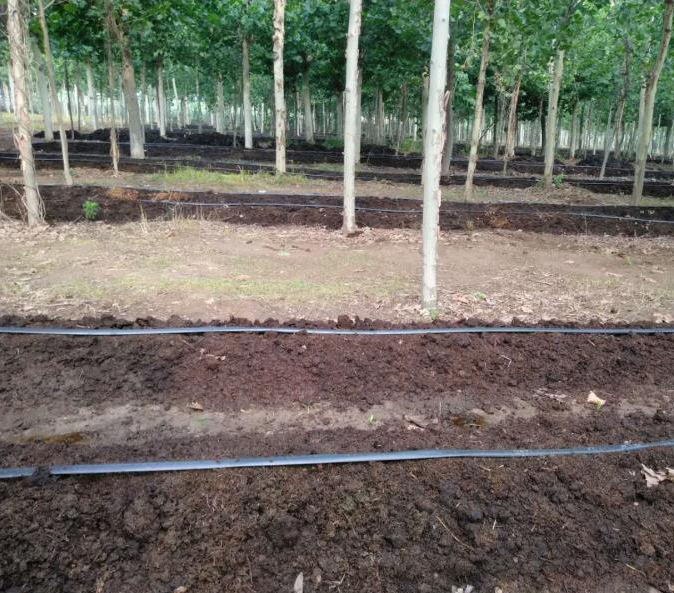
Spread cow or pig manure and mixed manure on the ground 10 to 25 centimeters thick and dry until about 5 to 60 percent.Then the manure rack pile up, can use rectangular, semi-cylindrical pile method, each pile of a layer (15-20 cm thick) manure on 300 to 500 times the "EM" once, so repeated spread 4-7 layers, until the water seeps out as well;If the use of garbage, a layer of garbage a layer of dung pile.
There is no limit on the length and width, and it is covered with a thin film. In high temperature season, the temperature in the reactor will rise obviously on the second day, and will rise to 60-70 ℃ in 3-4 days, and then gradually decrease.When the temperature of the heap drops to 40℃ (this process takes about 15 days), the heap is turned over (top to bottom and sides to middle to restack, and "EM" is added).
After the feed is fermented, the PH value is tested. The suitable PH value of earthworm feed is 6.5 -- 7.5, but the PH value of many animal and plant wastes is often higher or lower than this value. For example, the PH value of animal excrement is 7.5 -- 9.5, so the PH value of earthworm feed should be adjusted appropriately to make it close to neutral, so as to suit the growth of earthworms.
7.3 Methods of preparing and adding nutrition to promote food quality:
Take a cubic meter base material as an example, take 100 kilograms of water, add 2 kilograms of urea, vinegar 4 two, saccharin 5 grams, pineapple essence 4 cover, mixed in water to dissolve, first take 50 kilograms of water poured on the base material, turn over the pile after another 50 kilograms of water poured on the base material, after two days can be used.In the feed of earthworm added citric acid, essence, saccharin, the earthworm feed into the earthworm favorite fruit sweet taste, earthworm from now on not only do not escape, not picky food, and food intake increased, thus greatly speeding up the growth rate, improve the yield.
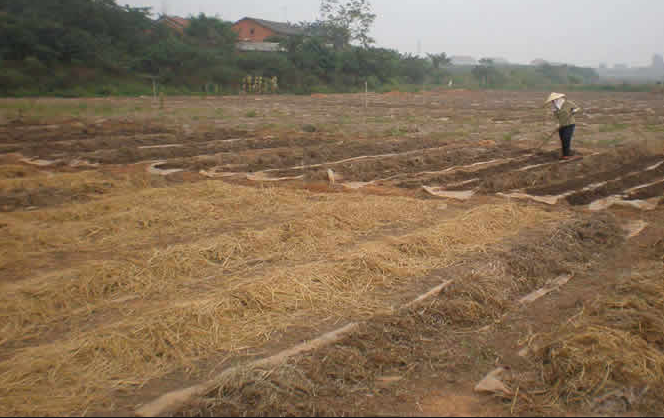
8、Earthworm seeding and breeding technology
In the process of earthworm breeding, the fermentation treatment of earthworm feed (poultry excrement, lees, bagasse, leftover food, waste blood and animal viscera, etc.) is the key. If the feed is not fermented or not completely fermented, harmful gases will be produced, and the pH is too high or too low, which may make earthworm escape, do not produce cocoon or even die.Using EM raw liquid to ferment the manure, the fermentation time of the manure is greatly shortened, the peculiar smell is reduced, and after the feed is fermented well, the pH value will naturally reach 6.5 ~ 7.5, need not adjust, can be fed directly, the feed utilization rate is greatly improved, the earthworm cocoon production, reproduction is fast, the yield is increased 2 ~ 3 times.
8.1 Seed:
At present, the most suitable variety for large-scale breeding is Daping no. 2.The body length of this worm is 50 ~ 70 mm, the body cavity diameter is 3 ~ 6 mm, and the adult weight is 0.45 ~ 1.1 g.The bristles on the body are fine and dense, and the color of the body is purplish red, but with the change of feed, water and other conditions, the color of the body also has the change of depth.This earthworm in addition to thick body cavity, meat, long life, can adapt to high-density feeding, there are high reproductive rate, strong adaptability, easy to raise and other advantages, very suitable for artificial large area breeding.

8.2 Feed processing:
A.There are only three kinds of feed suitable for large area farming;Chicken manure, pig manure or cow manure, pig manure ratio can be added up.
B. Feed fermentation;Spread cow or pig manure and mixed manure on the ground 10 to 25 centimeters thick and dry until about 5 to 60 percent.Then the manure rack pile up, can use rectangular, semi-cylindrical pile method, each pile of a layer (15-20 cm thick) manure on 300 to 500 times the "EM" once, so repeated spread 4-7 layers, until the water seeps out as well;If the use of garbage, a layer of garbage and a layer of manure pile, length and width is not limited, and the film cover, in the season of high temperature, generally the second day of the pile temperature is significantly increased, 3-4 days can rise to 60-70℃, then gradually decreased.
When the temperature of the heap drops to 40℃ (this process takes about 15 days), the heap is turned over (top to bottom and sides to middle to restack, and "EM" is added).After the feed is fermented, the PH value is tested. The suitable PH value of earthworm feed is 6.5 --7.5, but the PH value of many animal and plant wastes is often higher or lower than this value.
For example, the PH value of animal excrement is 7.5 -- 9.5, so the PH value of earthworm feed should be adjusted appropriately to make it close to neutral, so as to suit the growth of earthworms.
C. Methods of preparing and adding nutrients to promote food volume;Take a cubic meter base material as an example, take 100 kilograms of water, add 2 kilograms of urea, vinegar 4 two, saccharin 5 grams, citric acid, pineapple essence 4 cover, mixed in water to dissolve, first 50 kilograms of water poured on the base material, turn over the pile and then another 50 kilograms of water poured on the base material, two days can be used.By adding citric acid, essence and saccharin to the feed of earthworm, the feed of earthworm is adjusted into the sweet taste of fruit that earthworm likes to eat most. From then on, earthworm not only does not escape, is not picky about food, but also eats more, thus greatly speeding up the growth rate and improving the yield.
8.3 Feeding by stages:
Different cultivation management according to individual development stage of earthworm is the key to high yield of artificial cultivation of earthworm.The traditional method of "several generations living under the same roof" could not be divided into different sizes in harvesting and utilization. The adult worms that exceeded the optimum harvest time could not be harvested in time, wasting bait and breeding equipment.The harvest of juvenile worms before the best harvest time will reduce the yield, and manual sorting will increase the labor intensity. When artificial breeding, special worm pond and production worm pond should be established.
8.4 Box culture:
Overlap of the same specifications of breeding, can carry out three-dimensional intensive breeding, which is one of the breeding methods commonly used at present.
Do wooden case and frame first, frame can be welded with reinforcing bar, Angle iron or build a frame with bamboo, wood, also can use brick, cement board to wait for material building build by laying bricks or stones.The breeding box is 50 centimeters long, 35 centimeters wide and 25 centimeters high. It is placed on the feeding shelf and usually has 4 to 5 layers.
Fill the box with more than 10cm of loose soil and cover it with breathable escape net.When breeding, pay attention to ventilation, adjust temperature and soil humidity, keep the soil clean and indoor hygiene.
8.5 Breeding management:
Earthworm culture is divided into several stages, such as worm breeding, worm cocoon hatching, early juvenile worms, late juvenile worms and adult worms.Management requirements for different periods are as follows:
A. Incubation bed management;The thickness of the hatching base should be 10 cm to 15 cm, and the hatching base should be kept fine and wet. Each square meter can hatch 50,000 to 60,000 worm cocoons. The hatching base should be loosened once or twice a month with an iron fork to facilitate ventilation and the survival of young worms.
B. Early juvenile worm management;In order to reduce the density of juvenile worms, it is necessary to remove the feces in time when most of the incubating base is defecated, use downcasting method to feed and expand the bed in time.
C. Late juvenile and adult management of worms;In the later period, the young worms grew rapidly, so The Times of manure removal and feeding should be increased, feeding by downcasting method and bed expanding culture should be timely.When the sexual maturity into the breeding period, we should give full play to the advantages of earthworm production and cocoon production, lose no time to reduce the breeding density or timely harvest and use, or replace the old species of worms.
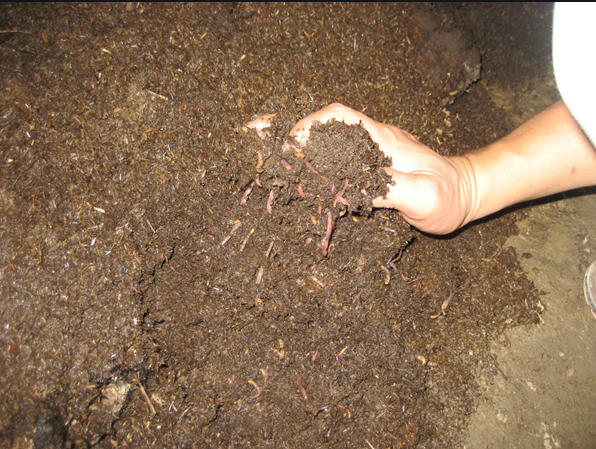
D. Thin feeding and frequent removal;The worms were fed twice a month, and the worms were removed, cocoons or feeding beds were turned over three or four times. The thickness of feeding was 15 cm to 20 cm each time, so as to keep the bait fresh and air permeable all the time and create the best ecological environment for earthworms.In feed plenty of cases, the use of the advantage of earthworms grow period (before and after sexual maturation, appears in the loop body link marked) short-term (usually with 1 month advisable) high density cultivation, and increase the number of harvested, timely adjust and reduce the population density, maintain the dynamic balance growth and harvest, is the key to capture the earthworm high yield.
F. Rotation update;Through the continuous renewal of species of worms and the periodic rotation of breeding beds, not only ensure the prosperity of the population, but also avoid the natural decline of the population caused by long-term cultivation of the same worm group in the same bed. The species of worms should be renewed every March and April.
8.6 Control of breeding density:
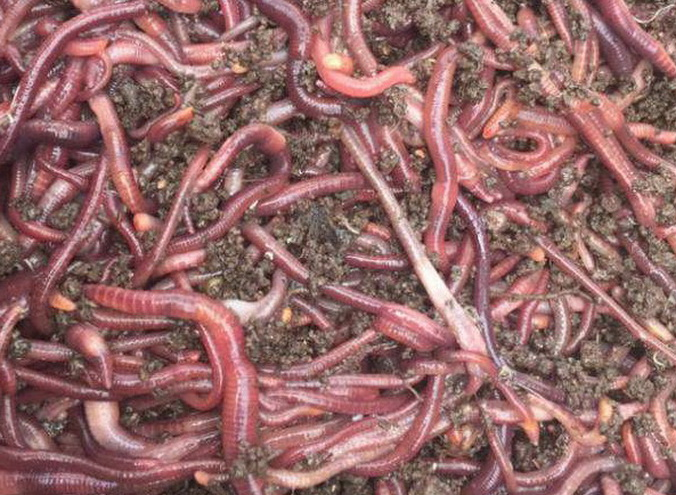
The optimum density of earthworm cultivation is 2.8 kg to 3.1 kg per square meter or 20 thousand earthworms per square meter. Within this range, less planting and higher yield can be achieved.In the early stage, the density of juvenile worms can be slightly more than 30,000 pieces per square meter or 2.5 kilograms per square meter.Late juvenile to adult worm culture density can be gradually reduced to about 20,000 per square meter.The density control should be combined with rotation and renewal, and the density control can be achieved by constructing worm beds, hatching beds, early-stage juvenile worm beds and late-stage juvenile worm beds according to the area ratio of 1:1:2:4.
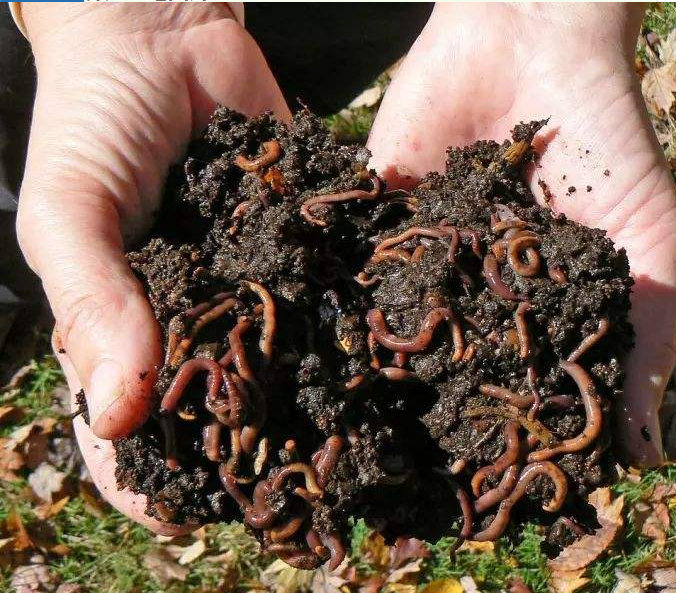
8.7 Daily management:
Earthworm is an ectothermic animal. Environmental temperature not only affects the body temperature and activity of earthworm, but also affects the metabolism, growth and reproduction of earthworm. Temperature also has a great influence on other living conditions, which indirectly affects earthworm.Therefore, temperature is an important ecological factor directly affecting the growth and oviposition of earthworms.
Generally speaking, the most suitable temperature of earthworm is about 20-27 ℃, which can grow and reproduce better.Earthworms have no special breathing apparatus. They breathe through their skin, so their bodies must be kept moist.If an earthworm is left in a dry environment, its skin will not remain moist for a period of time, so it cannot breathe properly. The worm will immediately develop convulsions and soon die.Water in an earthworm is a huge component, accounting for more than 75% of its body weight, so preventing water loss is key to the survival of the earthworm.
Of course, too much moisture in the soil is not good for the growth and development of earthworms.Because earthworms love fine, rotten, wet feed, especially because they breathe by absorbing oxygen dissolved in water through their skin, it's important for earthworms to keep a good water supply.The ability of earthworms to resist rapid desiccation is poor, and the optimum humidity of their breeding environment is 70-75%.The whole process of earthworm farming requires adequate fresh air.
In order to keep the feeding bed always in loose and breathable state, the following measures can be taken: the thickness of the base material shall not exceed the specified height, and must be reduced from time to time;After feeding for a period of time, the substrate can be properly turned 1 time, the upper and lower substrate will be turned over, the position change, not only can make the lower substrate loose, breathable, but also help the upper and lower substrate humidity tends to be consistent.
Stocking density of earthworms is closely related to the species of earthworms, growth period, environmental conditions (such as food, culture methods and containers), and management technology. The stocking density of earthworms in a medium of one square meter and 25 centimeters high is:When the earthworm is hatched, 80 -- 100 000 earthworms can be distributed, and 30 -- 65 000 earthworms can be distributed in half a month to adults. When earthworms are cultured, the breeding bed is timely expanded, the breeding density is adjusted, and the worms are taken out, which is an effective measure to improve the yield.

A. Straw feed processing;Of straw and straw (cut into small pieces is better) to lay a layer of thick (10 ~ 15 cm) dry, dry and then in the upper of waste (4 ~ 6 cm thick), repeat 3 ~ 5 layers, each with a water layer with watering can (EM concentrate at this time to join in the dunghill, need a ton of waste EM10 kg water about 100 kilograms), until the water seepage as well;If the use of garbage, a layer of garbage a layer of dung, length and width is not limited, and film cover;If 100% manure is used, first dry the manure to 60 to 60 into the rear rack pile, wet with EM and water, cover with a film.
B. turn heap;In the season with high temperature, the temperature in the reactor will rise obviously on the second day, and it can rise to 60℃ ~ 70℃ in 4 ~ 5 days, and then gradually decline. When the temperature in the reactor drops to 40℃ (this process takes 12 days), the reactor is turned over, the top is turned over to the bottom, the two sides are turned over to the middle, and then the EM diluent is added.Turn the pile 2 ~ 3 times in winter and 1 time in summer.
C. feeding;After the end of feed fermentation, feed can be used after water cooling, feeding method and side feeding method are generally used, adding method is to spread the feed in the original has been eaten by earthworms on the feed, every 10 to 15 days 1 time;Side feeding is taking part of the finished feed and adding the new feed to one side, and the next time adding the other side.
There is a great difference between large-scale and small-scale earthworm cultivation, which mainly reflects in the selection of worm species, purification and rejuvenation, feed preparation, worm bed scheme, management measures, disease control and harvesting, etc.
8.8 Disease Control:
A. Feed poisoning;Earthworms were found to be partially or even completely paralyzed, with yellow or grass body fluids discharged from the back and large areas of death. This was the newly added feed containing toxins or poisonous gases.At this time to quickly reduce the thin material bed, the toxic feed removed, hook loose material bed base, add vermicompost adsorption gas, let earthworms into the bottom of the rest, slowly can adapt to.
B. Proteinosis;If the worm body of earthworm is found to have local withered, one end atrophy or one end swelling and die, the earthworm that is not dead refuses to eat, has a sense of fright, and apparently appears emaciation.As a result of feeding, this is protein poisoning caused by improper collocation of feed components.The content of protein components in feed should not be too high (the fecal material should not exceed the standard when the base material is made), because the toxic gases such as ammonia and fetid odor produced when the protein feed is decomposed will poison earthworm protein.After discovering protein poisoning disease, should quickly remove improper feed, add spray water, hook loose material bed or add buffer belt, in order to detoxify.
C. hypoxia;If the earthworm is found to be dark brown, weak, slow activity, this is caused by oxygen deficiency earthworm anoxia.The reasons are as follows: (1) Without complete fermentation of manure, excessive amount of harmful gases such as ammonia and alkane are produced;(2) If the environment is too dry or too wet, the stomata of earthworm epidermis will be blocked;(3) The worm bed is too tightly covered and the air is blocked.
At this time, we should find out the cause in time and deal with it.If base mastow is removed, continue ferment, add buffer belt, spray water or drainage, make the humidity of base mastow soil is maintained in 30, 40% left and right sides, open the door when noon is warm open a window to ventilate or open cover content, add install exhaust fan, so this disease can be solved.
D.hyperglycemia;In the discovery of earthworms spasmodic nodules, redness and swelling of the ring, the body becomes coarse and short, the body secretes more mucus, crawls in circles on the feeding bed, or drills into the bottom of the bed do not eat motionless, and finally the whole body becomes white and dies, and some disease worms appear before the death of body segment fracture phenomenon.This shows that the starch, carbohydrate or salt in the earthworm feed is too much, which is acidified by bacteria and causes the earthworm to have gastric acid exceeding the standard.Treatment is to lift the mulch to ventilate the wormbed and neutralize it with an alkaline drug such as soda or gypsum powder.
E. Edema disease;Such as the discovery of earthworm body edema swelling, daze or desperately to climb outside, back hole out of body fluids, sluggish food and death;Even cause worm cocoon rupture or make the two ends of the newly produced worm cocoon can not be closed and infected with fungus mildew rotten.This is because the humidity of the worm bed is too high and the PH value of the feed is too high. At this time, the humidity should be reduced and the earthworms that climb to the surface should be cleaned up in another pool.Add superphosphate powder or vinegar residue, alcohol residue in the original base material to neutralize the ph, and then try to cast earthworms after a period of time.
Worm body spasmodic nodules, coarse and short, red and swollen links, the body mucus secretion increased, the worm white and death.Because worms ate poisonous forage, such as livestock manure piles near sprayed with pesticides, watered the pollution of bed of lumbrukinase, had piled up at temporary raising earthworms strong chemical fertilizers, pesticides, shipping containers of earthworms come into contact with toxic substances, and temporary raising earthworms on film without leaking, feed feed too damp, earthworms living environment too damp, high temperature occurs when the loop body turned white, a handful of death.
Such as poisoning due to this situation, can take multiple water, so that harmful substances washed away, but also frequently add refined feed rice bran, bran, etc.;Indoor temporary earthworm disease, to move away.If the worms turn white due to excessive moisture, fermented dry animal manure or concentrate feed can be added, mixed with the original wet material and vermicompost, and the film can be removed. If a few dead worms are found, they can be moved to the worm bed for feeding, so that the worms that are still active can be restored to health.
8.9 Harvesting and processing:

In general, one egg is laid in 1.5 to 4.5 days, and the egg cocoon hatches out young worms in about 33 days, with a hatching rate of 97%. On average, 6.8 young worms are hatched from each egg cocoon, and the young worms grow to sexual maturity in about 38 days. The egg cocoon produced by an earthworm within a month can gradually hatch into 50 to 80 small earthworms, and the whole growth period (i.e. growth cycle) is mature in 60 days.That means five to six harvests per year.
A. Harvesting of earthworms;Turn down drive method, on the surface of the breeding bed, with multi-tooth rake loose surface of the bed material, waiting for earthworms to drill down, with the surface of the worm scraping, repeated loose bed material and scraping vermicompost, finally earthworms concentrated in the bottom, to achieve the purpose of collecting worms.Using this method to collect earthworms, the effect is very good, this method is simple, one person can catch 150kg earthworms a day.
B. Handle by hand (plastic gloves may be worn) or with a custom-made iron rake with flat spikes;Will most of earthworm has sexual maturity vermis bed shoveled on membrane surface, tall after more than 50 cm, with a rake turn a few times more, earthworm stimulation has been move to bottom until the film to the surface and feed vermis dung (eggs) cocoon out gradually move back over vermis bed, finally will be collected most of the big earthworms weighing temporarily.
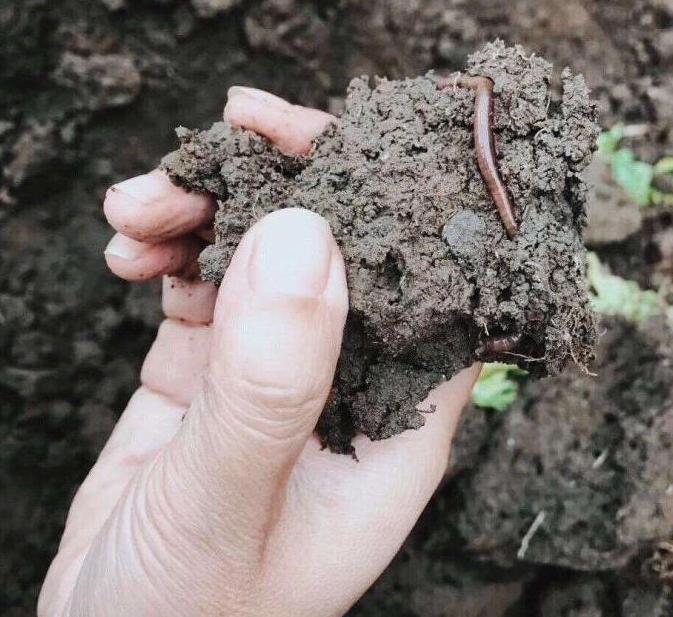
C. Earthworm processing;Drying or drying earthworms, sealed packaging, notify the acquisition unit.
D.vermicompost processing;Earthworm dung dry, screening, simple packaging, notify the acquisition unit.
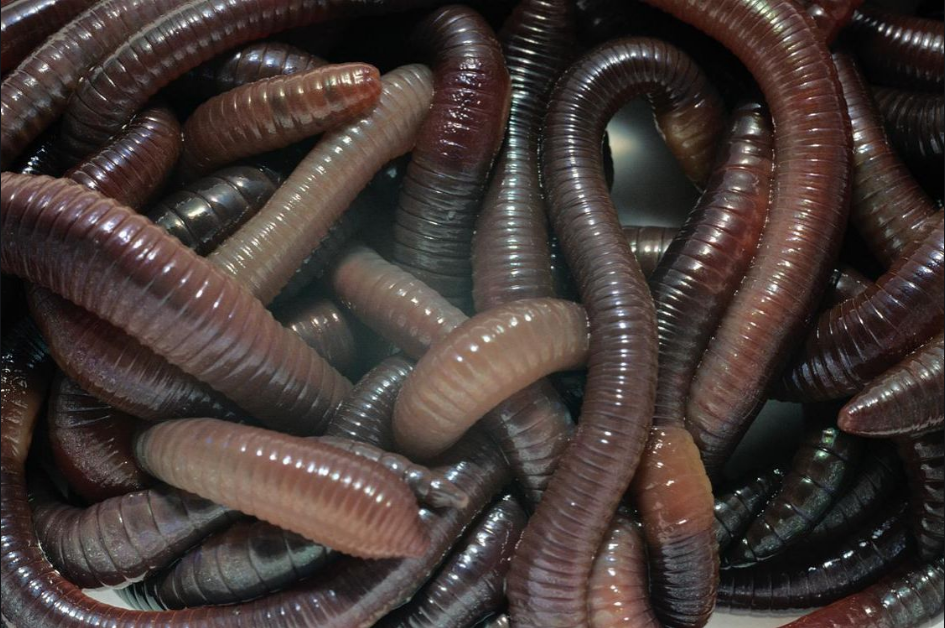
8.10 Venue Requirements:
A. Earthworms are dark and nocturnal, with good ventilation and drainage.
B. The site shall be waterproof and rainproof;
C. Avoid places where the human field is noisy, noisy or vibrating seriously;
D. No pesticides and other toxic pollution, and can prevent the harm of mice, snakes, frogs, ants and so on;

8.11 Water Quality Requirements:
The water is clean, sanitary and pollution-free, and it is best to use groundwater;
8.12 Soil requirements:
A. Humus is preferred, clay is strictly prohibited;
B. Ph is neutral.
9、Benefit analysis :(calculated by covering an area of 60 mu)
9.1 Annual input and expenditure cost:
A. 12,000 cubic meters of cow manure (pig manure, chicken manure, mushroom waste), 10 yuan per cubic meter, A total of 120,000 yuan per year;
B. 2400 kilograms of earthworm seedlings on 60 mu land, a total of 72 thousand yuan per kilogram at the cost of 30 yuan;
C. Land occupation fee of 60 mu is 300 yuan per mu, a total of 18,000 yuan per year;
D. 8000 yuan for water and electricity tools;
E. Salary: 20 employees, 2500 per person per month, a total of 600,000 yuan per year;
F. Packaging and transportation costs of 1.5 million yuan;
G. Other expenses: 350,000 yuan per year.
Total: 2.668 million RMB
9.2 Annual output:
A. Propagation and harvesting instructions:
Each egg cocoon hatches 6.8 juvenile worms, and each egg cocoon produced by an earthworm within a month can gradually hatches 50-80 small earthworms. The whole growth period (i.e. growth cycle) is mature in 60 days, that is to say, it can be harvested 5-6 times a year, and the yield should be calculated according to 5 times of harvest.
B. production:
5000kg of dry earthworm is produced each time, calculated for 5 times a year: 5000kgX5=25000kg;
Each production of 30000 tons of vermicompost, calculated by 5 times per year: 30000 tons of vermicompost X5= 150,000 tons;
It can solve the manure pollution problem of the surrounding 10,000-20,000 large pig (cattle) farms.
9.3 Market price:
Whole country earthworm wholesale price is about 34 yuan/kg, the market price is relatively stable.
At present dry earthworm in the international market of 150,000 to 180,000 yuan per ton;Anguo pharmaceutical market per kilogram dry earthworm wholesale price of110yuan-33yuan;Beijing Dahuan Earthworm Factory sells vermicompost for 600 yuan per ton.
Fresh earthworms sold to special aquaculture farms, about 8 yuan per kilogram;Flower and bird markets or anglers can sell for 60 yuan (3 yuan 1 liang) per kilogram.
9.4 Revenue:
A. Annual output of 25000 kg dry earthworms, price per kg 110 yuan = 2.75 million yuan;
B. Annual output of 150,000 tons of vermicompost, price of 600 YUAN per ton = 90 million yuan;
C. Earthworm and lumbrokinase are not extracted and purified, and are not calculated;
Total: 92.75 million yuan
9.5 Net income:
RMB 92.75 million (total revenue) -- RMB 2.668 million (total expenditure cost)= RMB 900.82 million (Total profit)
10、Earthworms and environmental protection
At present, agricultural production relies too much on chemical fertilizer, which makes the soil harden and acidify, and the activity conditions of microorganism and other soil animals in the soil deteriorate, the number drops sharply, the soil slope fertility decreases, and the ecological balance is lost.
With the continuous development of breeding industry, a large number of animal feces produced by breeding can not be treated, resulting in serious pollution to the environment. A large number of straw burning is not only a waste of resources and serious pollution of the atmosphere.
Earthworms are widely distributed, abundant and have large biomass on earth, which is a huge biological resource.Earthworms work hard silently for material circulation and ecological balance all the time, no matter in farmland, garden, or mountain, grassland, forest soil earthworms can be seen.
There are data to show that the general apple orchard has about 80 kilograms of dry leaves per mu, before entering winter, more than 90 percent are dragged into the earth hole by earthworms, gradually swallowed.In temperate forests, there are 166.7 to 244.0 kg of leaf litter per acre, and in tropical forests, 366.7 to 1000 kg of leaf litter per acre.The residue of these plants is mainly broken and decomposed by earthworms, and then decomposed and digested by aerobic and anaerobic microorganisms.In grassland, much of the dead grass and livestock manure is mainly broken and decomposed by earthworms.
In the natural material cycle, earthworm is a decomposer, earthworm burrow, loose soil crushing, decomposition of organic matter, more soil microbial reproduction created a good condition, enhance the activity of microorganisms.The digestive tract of earthworm is the place where some soil microorganisms continue their activities. The decomposition function of earthworm plays an important role in the material cycle. It participates in the natural carbon and nitrogen cycle, and can reduce organic carbon to inorganic carbon, decompose, digest and assimilate various forms of nitrogen.Earthworm plays an important role in material circulation and ecological balance in nature.
In Japan, earthworms were used to treat pulp sludge, which not only improved the environment and eliminated pollution, but also obtained rich economic benefits.For example, a paper mill in Japan imported 125 tons of earthworms from the United States to remove pulp residue from the mill.It used to cost the plant $400,000 a year to remove pulp residue.
After the worms were introduced, they sold their vermicompost and earned back the money they had spent on worms in a year.In Japan, there is a kind of feeding box with an area of 0.5 square meters and a depth of 30 to 50 centimeters. Each box can hold 1000 earthworms, which can grow to 1 billion after two years. They can eat 50 tons of paper waste liquid and produce 25 tons of earthworm manure every day.There are more than 200 earthworm farms in Japan, among which kyushu and Hokkaido are the most developed.One of the largest earthworm factories in Hyogo prefecture, with 1 billion earthworms, can process 60,000 tons of sludge from food and fiber processing plants annually.
For example, a paper mill with an annual output of 100,000 tons of paper has about 45,000 tons of waste paper residue every year. If treated with earthworms, it can produce about 2,000 tons of earthworms and 15,000 tons of vermicompost, which will be a considerable wealth.
In the United States, an earthworm production factory uses domestic waste first crushed into the biogas tank, producing a large amount of biogas for market use, biogas production after the use of slag to breed earthworms, earthworms are all exported.In one experiment in Los Angeles, 7.5 tons of mashed waste were sent to a worm farm, where it was digested by a million earthworms in less than a month.In addition, more than 1 million earthworms are raised in an earthworm farm in Los Angeles, and 7.5 tons of waste can be disposed of every month.A Californian company raises 500m earthworms and can dispose of 2,000 tonnes of waste a day.Kroc, Ontario, Canada, uses worms to dispose of 20 tons of waste per week, along with dozens of tons of vermicompost and large quantities of fresh earthworms for flowerbeds, farms and other needs.
Thus, earthworms have amazing decomposition, transformation ability, usually people know that soil microorganisms on the dead animal carcass, plant residues, fallen leaves, straw, animal carapace and horniness, is the first through earthworms and other soil animals decomposition and fragmentation, microbes can further decomposition.Many countries in the world use this special function of earthworm to deal with household garbage and many organic wastes, so that the ecological balance.
Imagine, if there is no earthworm on the earth to participate in decomposition, reduction, there will be corpses everywhere, this terrible scene is unimaginable, the earth will become a planet without life.
11、Development and utilization of earthworm resources
Earthworm farming, like other undertakings, needs to develop actively and steadily according to local conditions. Suggestions are put forward as follows:
11.1 Comprehensive utilization:
In foreign countries, earthworm breeding is mostly considered from the comprehensive utilization, earthworm is often treated as a by-product in the process of public hazard treatment, and used for feed, so the cost is low.
In Japan, earthworm farms are mostly set up near paper mills to digest the sludge and residue from the paper making process.In this way, public hazards are eliminated, manpower and material resources are saved, and the earthworms and vermicompost obtained can also be used as feed and fertilizer, killing two birds with one stone.
11.2 Establish earthworm breeding farm and breeding system:
Earthworm is a lower animal, genetic variability is larger, also easy to degenerate, in order to maintain the high yield, stable yield, high quality and other properties of the excellent varieties of earthworm, it is necessary to have a plan, step, scientific breeding of earthworm, and establish a three-level breeding system, namely, earthworm seed farm, earthworm breeding farm, earthworm production field.
Main task of the improved seed farm is to domesticate, introduce, select or cross breed earthworms.According to the predetermined breeding goal, using genetic engineering, genetic engineering, physics, chemistry and other means to earthworms mutates, compare selection, appraisal, and to develop better varieties to early maturity, high yield, fast reproduction, fast growth, high quality, high protein content, good adaptability, stable yield (such as resistance is strong, including cold resistance, heat resistance, drought resistance, salt resistance, acid resistance, etc.,Strong feed adaptability, etc.), low consumption (high feed utilization rate, low production cost).Therefore, the seed farm must have strong technical force and better equipment conditions.The main task of the production field is to produce earthworms and vermicompost in large quantities.Feed can be local materials, pay attention to product development and comprehensive utilization, reduce the cost.They can be raised on a large or small scale and try to increase the yield per unit area.The main task of the breeding farm is to produce enough earthworms for production.
11.3 Increase yield per unit area and proliferation rate:
In a certain period of time, the yield of earthworm per unit area mainly depends on the multiplication factor of earthworm, that is, the multiplication rate.The reproduction rate of earthworms is mainly determined by the following factors: the number of cocoons produced per earthworm per year, the average hatching rate of cocoons, i.e. the average number of larvae hatched per worm cocoon, the survival rate of larvae and the number of days between earthworms.Therefore, the first choice of high proliferation rate of earthworm species for breeding.
11.4 Earthworm safety:
Although earthworms can be used as high quality feed and food, but also as medicine, but before using it must be carefully analyzed and checked to see whether earthworms have been infected with parasites (because earthworms are the intermediate host of some parasitic nematodes and tapeworms, often infected by chickens and pigs).
Earthworms are known to cause 9 parasitic diseases in chickens and 6 in pigs.Earthworms can absorb tin, lead, mercury, arsenic and other heavy metal elements from soil and feed, as well as phosphorus, organic atmosphere, organochlorine and so on, and can be ten times in the body tissue enrichment.
Therefore, it is forbidden to use heavy metals, organophosphorus, organochlorine, organic atmosphere and other pesticides or parasites to feed earthworms in the process of breeding earthworms.In order to ensure the safety of the earthworm breeding.